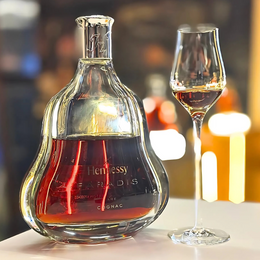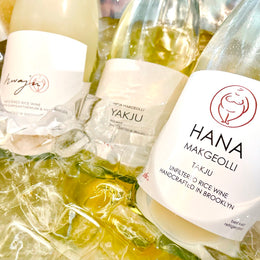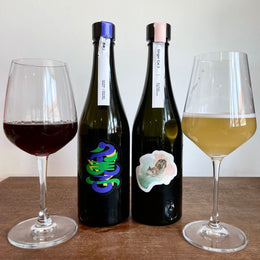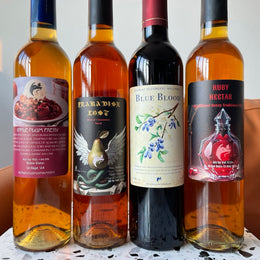Tasting Testing Pagoda Brand Hua Tiao Chiew; Plum Blossom Brand Hua Tiao Chiew: The Underrated, Unsung Hero of Chinese Cuisine That's Equally Good On Its Own
Amongst the pantheon of ancient alcoholic drinks, there is one that's so lowkey, so under-the-radar, that it's more likely consumed in any other form other than its on its own. Said to be at least thousands of years old, with some scholars dating its history as far back as when beer and wine were discovered, most of us around the world probably had tasted this ancient brew in a stew or a stir fry.

If you're familiar with your Chinese cuisines, you guessed it - that ancient brew is Chinese rice wine itself! Pronounced "mijiu 米酒“ in Mandarin Chinese, Chinese rice wine have been mentioned by emperors, poets, scholars; despite the many regional variants of the brew, there came to be one rice wine from a single region that became representative of the nation for millennia - Shaoxing wine (绍兴酒 /紹興酒).
From Crude Brews To Cultural Icon
Shaoxing wine, named after the region of Shaoxing, the northeastern prefecture-level city within the province of Zhejiang. Alleged earliest records came at roughly 2500 BC, with more literature of the region's wines found during the Eastern Han Dynasty (25 A.D. - 220 A.D), where governors recognised the superior quality of the water from the surrounding mountains of the town. A dike is built to form the Jian Lake (鉴湖) to collect the quality water and aid the booming rice wine industry.

![]()
A picture depicting rice wine drinking. Source: i.ifeng.com
As the Northern and Southern Dynasties (420 - 581) rolled along, the precursor of the modern-day shaoxing wine took its shape; transforming from a cloudy sort of wine to something that was known to be sweet and rich. Xiao Yi, who crowned himself Emperor Yuan of the Liang Dynasty (South), recalled in his journals that he was served this sweet "shanyin" wine in a silver cup on occasion.
It was during the Tang (618 - 907) and Song (960 - ~ 1280) Dynasties that saw a huge boom in the craft. The government, who sought to gain liqour tax from this now widely-known and craved after wine, encouraged wine breweries to open within the region - so much so that glutinous rice, the core ingredient of making shaoxing wine, started to outpace table rice in cultivation and prices. The market forces were so strong that people rather grow rice for wine making than actual consumption!
![]()
Shaoxing in the 1930s. Source: sohu.com
Consolidation began during the Ming (1368 - 1644) and Qing (1636 - 1912) Dynasties, where mass production, technological advancement and large brewery establishments start to outpace the small workshops making Shaoxing wine. The brew started to gain slow but steady international recognition, making debuts and winning awards in the Nanyang Industrial Exposition in 1910 and the Panama World Exposition in the United States in 1915.
![]()
The 1915 Panama Pacific Exposition was Shoaxing wine's first real debut to the international world.
During the establishment of the new Chinese government, the government made great efforts to preserve and advance the science of Shaoxing wine brewing. Premier Zhou Enlai approved the "Summary and Improvement of Shaoxing Wine Process 《绍兴酒工艺总结与提高》 ", a 12 year project to not only preserve the craft of Shaoxing Wine but also to improve the scientific understanding of it.

Wang Ah Niu 王阿牛 (on the right) teaching a young apprentice on the art of Shaoxing wine making. Wang Ah Niu has been largely credited for translating much of Shaoxing wine making from oratorical knowledge to documented reports and techniques. Source: finance.sina.cn
Now, fast forward to the current millennia; why is Shaoxing wine most associated to cooking? Most of it has to do with how Shaoxing wine is often used in cooking as well (much like wine!); and in general, Shaoxing wine hasn't had its real hayday as a beverage on its own just yet.

Alvin Quah's "Drunken & Bruised" has his famous Drunken Chicken as a component - the dish that caused a nation-wide shortage of Shaoxing cooking wine.
Perhaps, Shaoxing wine got nudged slightly into culinary stardom (of course, much credit still goes to the hardworking chefs that brings us beloved Chinese cuisine around the world) partly because of one particular chef in Australia. During Masterchef Australia Season 2 (2010), an Alvin Quah thoroughly impressed the judges with his Drunken Chicken recipe - a dish that got so famous that not only did it make Alvin Quah a household name, it caused a nationwide shortage of shaoxing wine! Renewed interest was breathed into the wine when Alvin Quah makes a return in Masterchef Australia Season 14 (2022), with his revamped Drunken Chicken 2.0 in an elimination challenge.
![]()
The Chinese Huangjiu Museum (中国黄酒博物馆) was opened in 2007, and recently renovated in 2014. Source: Baidu
On the homefront, Shaoxing wine has also been increasingly used as a diplomatic tool by the Chinese government. Since the Belt and Road Initiative, Shaoxing wine has been increasingly used as gifts or showcases of Chinese craftmanship, being served in the 2008 Beijing Olympics as well as the 2010 Shanghai World Expo. Perhaps most notably, a Shaoxing wine was served during the 2015 U.S White House State Dinner, where the wine was paired with a truffle mushroom soup.

The 2015 State Dinner with President Xi Jinping and President Barack Obama saw Shaoxing wine being served, paired with truffle mushroom soup.
So, What Exactly Is Shaoxing Wine (And How Is It Made?)
What's the secret sauce behind this elusive, yet captivating rice wine? First, let's get some terminology out of the way.
First thing to note, is that not all wines made from Shaoxing can be called Shaoxing wine. As of late, Shaoxing wine has been increasingly regulated, much like the geographical indications that protect coveted wine regions in Europe. Secondly, Shaoxing wine can go by a few names. Sometimes, Shaoxing wine is called "Yellow wine 黄酒", from its amber-saffron appearance; or "old wine 老酒", as Shaoxing wine is rarely if ever consumed freshly after its brewed, usually aged for around three years.
![]()
Glutinous rice, slightly polished. Source: finance.sina.cn
The main components that go into Shaoxing wine are as follows: glutinous rice, koji (made using wheat), and Shaoxing (Jianhu Lake) water. Some sources do note that raw ingredients other than glutinous rice can be used, such as beans (which has been used in the past) and millet; however, it is unclear whether they are the base ingredient where the main bulk of fermentation takes place or as starter cultures for the koji. Another base requirement is for Shaoxing wine breweries to be producing wine within specifically demarcated areas.

Source: Baidu
Water is of particular importance to Shaoxing wine making - sources pointed out that water from 36 different streams flow through the mountains and into the lake, carrying with just the right amount of trace minerals as well as a relatively neutral hardness (pH). Next, glutinous rice is the key defining characteristic of Shaoxing wine, alongside with malt koji (called 麹 qu). Most sources point towards using wheat as the starting grain culture for the koji, though there are some mentions of millet.
If you're a fan of sake and are familiar with your sake making know-how, you'll be surprised that much of the Shaoxing wine making steps are quite similar to that of its Japanese brethren. The glutinous rice is first polished (some sources say that the rice is often polished to 90%), washed and steamed, with some breweries taking extra care to wash, soak and steam the rice with that precious Jianhu water.
![]()
Glutinous rice is steamed in big woven baskets. Source: Baidu
![]()
Workers preparing the koji. Source: i.ifeng.com
Before rice can be turned into wine, it must first go through a saccharification process. Just like how koji is cultivated and forms a big part of sake making, koji too is cultivated for Shaoxing wine making, where enzymes to break down the starch molecules to sugars whilst imparting flavours in the final brew.
![]()
Koji when it is fully inoculated. Source: i.ifeng.com
And here's where the terroir of Shaoxing really shows - many attribute to the variety of climates; forests, mountains, lakes; that introduce a whole host of microflora to the ambient climate and geography of the region; something that just can't be replicated to the same degree elsewhere in China. In a way, koji has been naturally cultivated in Shaoxing for centuries!
![]()
A point to note is that quite a fair bit of Shaoxing wine making happens outdoors, during cold weather. Here is a worker from Pagoda Brand making starter. Source: Shine.com
After the koji is prepared, much like sake making, the koji starter, yeast and the freshly steammed rice (after it has been cooled sufficiently) is mixed together in open air vats. There, a whole host of beneficial microflora imbues the brews - there, not only is the beneficial microflora ensuring an optimal environment for the yeast to thrive, it also introduces a whole host of other flavours and aromas into the brew. For the sake nerds, here's also where lactic acid plays a key role in suppressing and eliminating harmful bacteria that could impede the Shaoxing wine making process.
![]()
Making and mixing the mash for the brew in a large vat. Source: i.ifeng.com
At this stage, here's where Shaoxing wine may differ from one another. In Shaoxing wine, a key factor of difference is the amount of sugar in the brew; very much like how the terms "extra brut" and "dolce" mean in the wine world. How this is achieved is done in a variety of ways: one, to add more rice during the fermentation stage; two, adding more already made Shaoxing wine during the fermentation stage (quite similar to kijoshu); and three, to add distilled spirit into the mash much like you would for sweet fortified wines.
![]()
A quick summary of the Wuhong, Jiafan, Shanniang and Xiangxue categories (left to right), with their corresponding sugar levels. Source: btqns.com
For a more exhaustive explanation of the different classifications:
| Classification | Sugar Level | Translation / Methodology | Example |
| Shaoxing "Yuan Hong" Wine 绍兴 “元红”酒 (Dry style 干型) | <15.0g / litre | Named after the vermillion paint in altars. This method does not add any rice, Shaoxing wine or spirit into the mash. |  |
| Shaoxing "Jia Fan" Wine 加饭酒 (Semi-dry style 半干型) | 15.0g - 40.0g / litre | Translating to "add rice", most premium Shaoxing wine belong to this category, where more rice is added into the mash for a slightly more concentrated brew. |  |
| Shaoxing "Shan Niang" Wine 善酿酒 (Semi-sweet style 半甜型) | 40.0g - 100g / litre | Roughly translates to "Good Brew". Often, brewed Shaoxing wine is added to the fermenting mash to increase its sweetness, much like kijoshu
貴醸酒. |
 |
| Shaoxing "Xiang Xue" Wine 香雪酒 (Sweet style 甜型) | >100g / litre | Translates to "Fragrant Snow", supposedly for its more whitish appearance. Spirit is added into the fermenting mash, much like a fortified wine. |  |
Right after the fermented mash is complete, the brew undergoes filtration and aging, usually in big clay vats, where the flavours would change and develop.
![]()
A quick summary of Shaoxing wine making: soaking rice, steaming rice, making starter, making mash, pressing, pasteurising, aging, and long term storage.
Classifications... and more classifications
Admittedly, here is where things gets slightly confusing. In a sense, these classifications are those inherited from cultural practices of a bygone era. From what we've gathered, whilst you may see these terms proudly displayed on labels (fun fact: according to a circular by the People's Government of Zhejiang Province in 2021, only 20% of Shaoxing wine producers put the geographical indication on their bottle!); they may not necessary point to a certain methodology or grade so to speak.
"Hua Tiao Chiew" 花雕酒
![]()
Hua Tiao Chiew (sometimes spelt Hua Diao Chiew) usually comes in ornate porcelain bottles. The Gu Yue Long Shang brand for instance uses white porcelain and blue paint for many of their products. Source: umail
This term is named after the flower paintings and motifs glazed onto porcelain bottles of premium Hua Tiao Chiew. This term is typically referred to the premium range of Shaoxing wine, as you would if you're going the extra mile for your packaging! There isn't hard and fast rules for using the Hua Tiao Chiew label, however, most breweries designate these wines to be aged slightly longer with a richer, more complex flavour.
"Nü (Nu) Er Hong" 女兒紅 / 女儿红
![]()
Burying pots of wine. Source: i.ifeng.com
Now, this has roots in a practice from way before. Translated into "Daughter Red" literally, back then, when a daughter was born into the family, the parents would brew a barrel (or vat, or clay pot) of rice wine and bury it in the family courtyard. Once the daughter is all grown up and to be married, the parents would retrieve this buried vat of wine that has been in slumber for the celebration or as a dowry.
Interestingly, the practice has also been recorded for when sons graduate and become a scholar as well.
![]()
Do note that there is a brand of Shaoxing wine called Nü Er Hong as well. Source: suning.com
Technicalities wise, there is once again no hard and fast rules, though, you could expect aging for these wines to be considerably longer (culturally, these wines would have been aged for at least 15 years). Some breweries carry a Nü Er Hong wine, intending to be wedding gifts or for major celebrations.
"No Salt" 无盐
This is something you have to pay attention to! As liqour laws would have it, there had to be a clear distinction between wines that are destined for cooking and those that are meant for consumption. Whilst you can drink Shaoxing wine as much as cook with it, the status quo would see most Shaoxing wine being thrown into a chef's blazing hot wok compared to your tipple glass. By salting the Shaoxing wine, it is exempt from otherwise hefty duties imposed from its alcohol content.
![]()
A sure-fire way to make sure your Shaoxing wine is suitable for drinking is checking the ingredient list for salt. Some brands may indicate "Salt Added", "Not For Consumption", or "Cooking Only" on their labels. Source: Omnivore's Cookbook
In your Asian grocer or supermarket, you have to pay attention and ensure that your Shaoxing wine meant for sipping is unsalted. Here's what to look out for on the label:

In this case, here's a bottle of unsalted Hua Tiao Chiew.
And that about covers all you need to know about Shaoxing wine (for more in-depth laws, here's a link of a scanned government document)! Without further ado, let's taste test two commonly seen Shaoxing wines at this part of South East Asia.

Wine Review: Pagoda Brand Shao Hsing Hua Tiao Chiew (Unsalted) 塔牌紹興花雕酒 無鹽 , 16%
Pagoda Brand is a brewery that brews most of the Shaoxing wines that we are familiar with for cooking - having a strong export market. That isn't to say, they aren't worth their salt! Pagoda Brand's premium Shaoxing wines has clinched awards a few times over the past decades, despite having a relatively early inception at 1958.

Here, we have the Pagoda Shao Hsing Hua Tiao Chiew, unsalted; a staple Shaoxing wine that is used by many chefs. The sugar content is 40.1g/litre, and this wine has been aged for three years.
Nose: The nose starts out very delicate, with umami fermented aromas of white miso intermingling alongside cooked brown long grain rice. It starts to grow in intensity as it sits in the glass, with the deeply salty and fragrant aroma of light soy sauce, the tannic, tart aroma of hibiscus flower tea and the roasty, lactic aroma of fermented black beans all intermingling together at once. After sitting for a while, the aromas coalesce into a deep, herbal note, such as boiled monkfruit tea and dried pine needle tea.
Taste: Initially, it starts appetisingly sweet and sour, giving sour apples, underripe crab apples and boiled dried figs in herbal soups. After the burst of zingy tartness and sweetness, the flavours evolve into more herbaceous tones, giving the impression of monkfruit, watercress soup and burdock root. There is a sappy nuance on the palate as well, such as chewing on apple cores or boiled chinese yam (huai shan).

Finish: On the finish, the savoury elements make a return, this time, reading like the lactic and bean-like flavour pressed hard tofu, the aromatic onion-like flavour of fennel and stir fried garlic scapes. There is a developing nutty character on the finish as well, like boiled peanuts, the aftertaste of crushed cumin seeds, and interestingly, a very subtle raisin-like sweet-savoury tone that ebbs and flows behind the more overt flavours. It ends of with a plant-like, fleshy flavour, such as boiled winter melon chunks.
Thoughts
It's no wonder this brand caught the world by storm - truth be told, it adds so much character in cooking! More than a useful jack-of-all flavouring agent in most Chinese dishes, this hua tiao chiew really has a great balance of complex umami and herbaceous flavours. Personally, I think this makes for a great digestif after a heavy meal - it coats the palate of a wide array of flavours, yet, has a gentle light acidity that seems to scrub away the flavours of previous dishes. I could see this being paired with a wide variety of stews or heavily flavoured Chinese dishes, where you take a tipple after each course to refresh the palate for the next dish to come.
Wine Review: Plum Blossom Brand Hua Tiao Chiew Unsalted 梅花牌花雕酒 无盐, 16%
Owned by Ang Leong Huat Pte Ltd, the Plum Blossom Brand of Shaoxing wines are made by Pagoda Brand as well. The sugar content for this wine is at roughly 22g/litre, aged for five years.

Nose: Subtle, delicate, and floral - it first gives aromas of Chinese light soy sauce, followed by aromas of tianqi (notoginseng), angelica root and dried mandarin peels. The aromas are fresh and dainty, like freshly prepared cold Japanese tofu appetiser (hiyayakko), congee with a dash of soy sauce, freshly plucked parsley, and freeze dried baby breath. After sitting for a while, unsliced dried Chinese red dates start to give the aroma a dry, nutty yet tart character.
Taste: Flavours of roasted salted peanuts, barbecue seasoning almonds and fermented bean condiment comes to the palate right away at first. On subsequent sips, fresh, green yet saucy flavours of cooked oyster sauce gravy, stir fried Chinese olive greens (kai lan) and broccoli stems arise after the initial nuttiness. Then, a sweet-sour note of sour plum drink (suan mei tang) accompanied with a bitey bitter-almond like flavour of foxnut starts to take over.

Finish: On the finish, molasses and light soy sauce flavours intermingle, giving a cooked, caramel like impression on the palate. The savoury flavour becomes the mainstay here, with red miso, unsweetened chrysanthemum tea and dried slightly aged tangerine peels. Interestingly, there are wisps of popcorn aroma that float about on the palate - the light salted, freshly toasted bits of corn flavour. The flavours slowly fade away, leaving a grassy note of wheat grass and boiled wolfberry as the final flavour on the palate.
Thoughts
This Hua Tiao Chiew reads in two different profiles. On one hand, the aromas and flavours are light, dainty, and subtle, giving notes of fresh herbs, botanicals and lightly seasoned dishes. On the other, the finish is deep, long and complex, throwing up much more nuance of deep savouriness and even nuttiness before turning into a neutral, grassy tea-like note. I'll say that I would pair this hua tiao chiew with vegetable centric dishes, or, as an apertif with lighter flavoured meals. Along the same vein, I feel that this could work as a nightcap towards the end of a meal, with a satisfying cleansing property that it has towards the tail end of the finish.
Closing Thoughts
Shaoxing wines, while often relegated to a pantry condiment, really deserves more attention in my opinion! Granted, we've barely scratched the surface here, with some luxury Shaoxing wines being aged upwards of ten years and more, with varying levels of sugar and styles. Even from just a culinary standpoint, I wholeheartedly recommend tasting the unsalted everyday stuff you find in your local grocer - who knows, that might make your next favourite aperitif.

@vernoncelli







